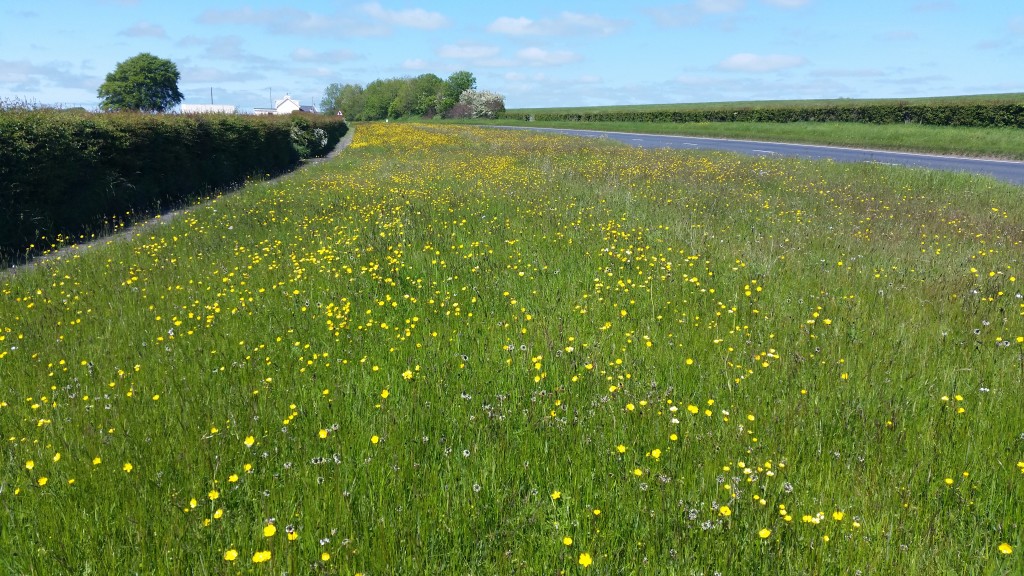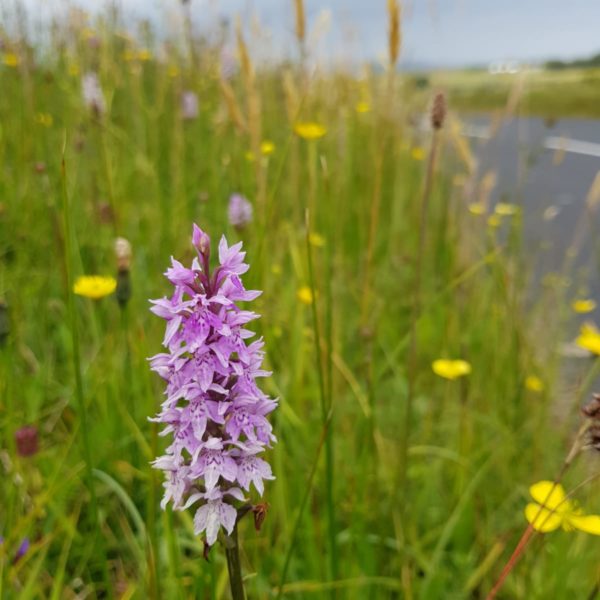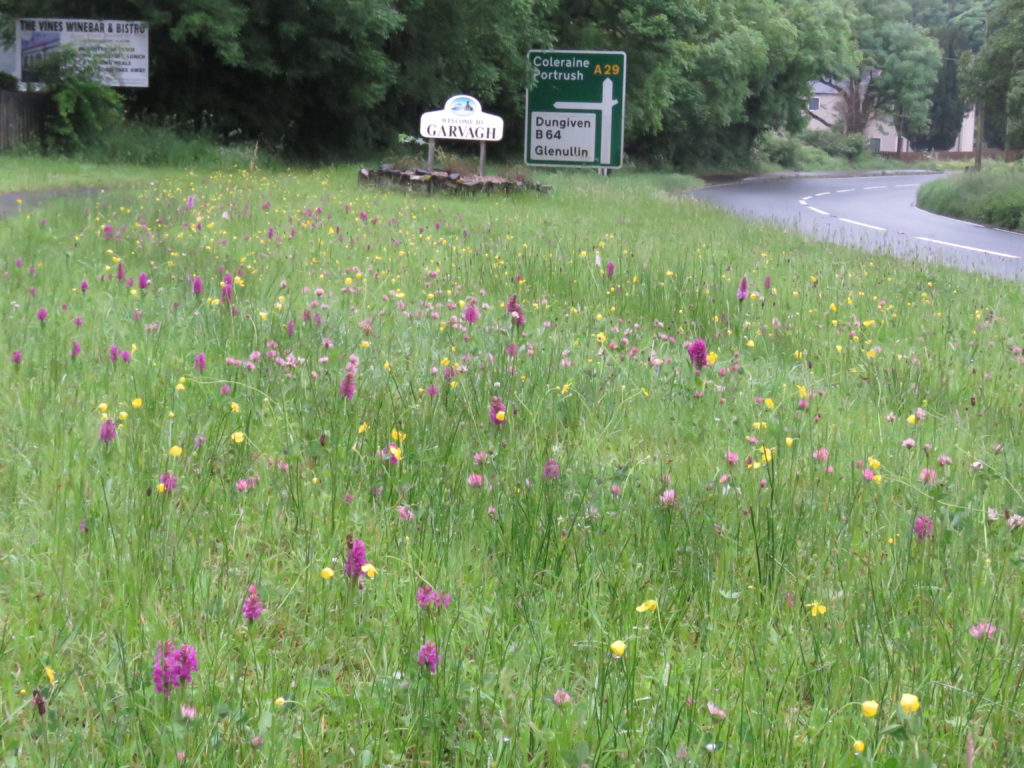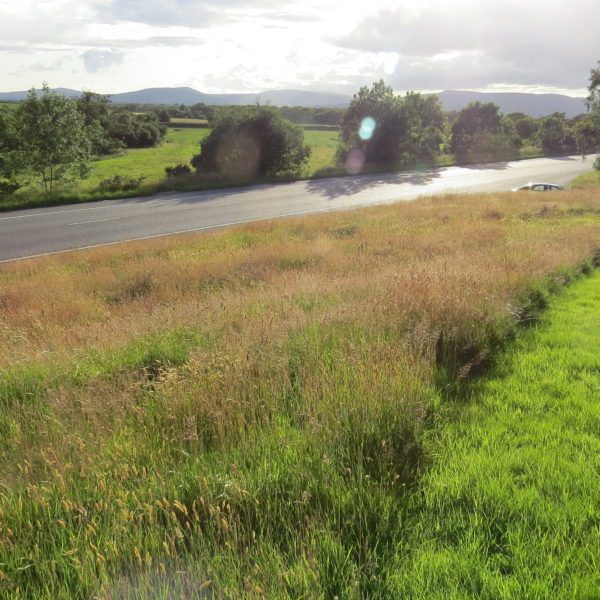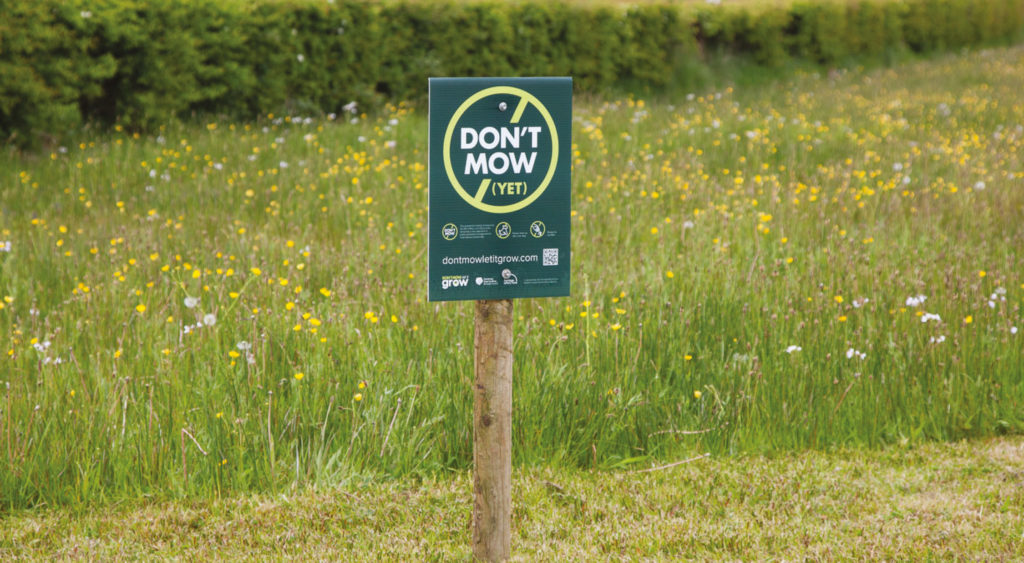Donna Rainey explains how a phonecall to her local Roads Service kickstarted a project that has protected many wildflower-rich verges in Northern Ireland.
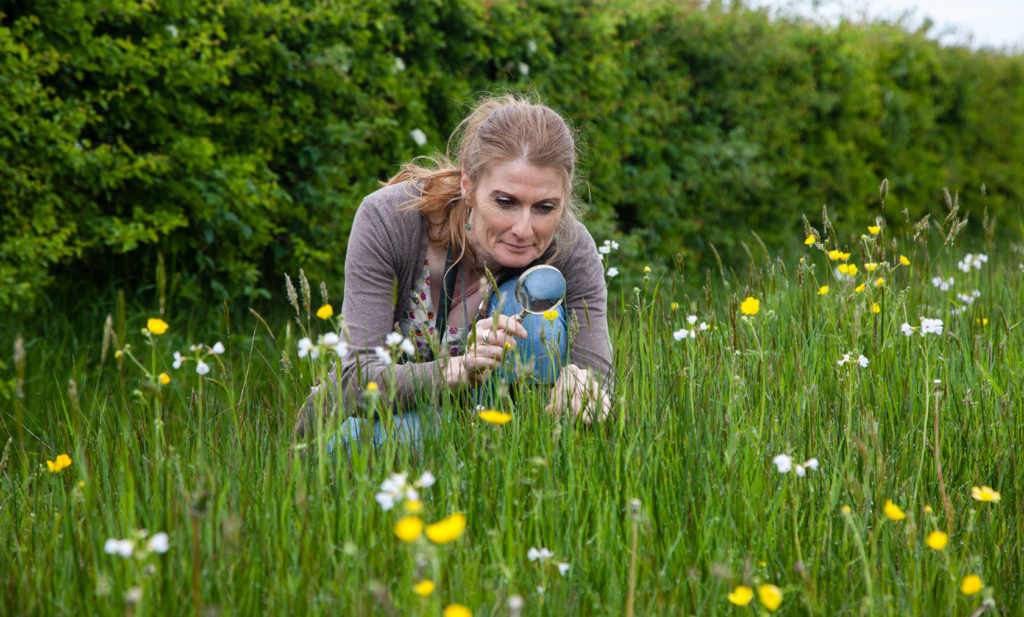
Routine mowing of roadside wildflower verges has troubled me for years. My summer walks and cycles have often been ruined by the impact of seeing wildflower-rich areas reduced to a flailed mess of cut grass and litter. How could this be preferable to a thriving roadside habitat? I don’t deny that management is required, but sensitive, timely cuts can change the whole appearance of the countryside.
Wildflower meadows have disappeared by 97%. Some of the remnants of these old meadows are on our roadside verges.
Think globally: Act locally
So, in an attempt to stop the mowing of flower-rich verges on the road where I live – where I had watched Common Blue butterflies laying eggs on Bird’s-foot-trefoil the previous year, I rang my local authority office:
I politely enquired if it would be possible to postpone mowing of some road verges which presented no visibility/Health & Safety issues, at least until late summer.
The reply was “No”. Very short and to the point!
“No, that would not be possible.”
Me: “Oh! Well, I struggle to understand why, can you elaborate?”
“People ring here asking to get verges cut”.
Me: “Yes, but if there is no specific reason to cut, surely some road verges could be allowed to flower?”
“No”.
Me: “So who do I speak to now, as I’m unhappy with this response?”
“Head Office. They will refer back to me and the answer will still be ‘No’!”
Well, I had nothing to lose then? If people can ask to have the grass on road verges cut, surely people can also ask for verges not to be cut! So I persisted and eventually I got to speak to an exceptionally polite and helpful man, who arranged a meeting with me to discuss.
A local community project at An Carn, Maghera, ENVISION, was kicking off at the same time. I met and spoke to the lead on the project, Pol Macana, who supported my road verge plan, and we organised meetings with the road service and the Environment Minister at Stormont. Several local verges were selected to be managed for wildflowers. The Northern Ireland Environment Agency (NIEA) had an input and we organised cutting and removing cuttings with the help of their staff, ENVISION volunteers and other interested volunteers. Soon the verges were awash with wildflowers and looked stunning. The insect life was a joy to see. Some verges, once protected, revealed two or three orchid species in abundance.
Roadside verges can act as a refuge for rare plants and invertebrates in a landscape increasingly being intensively managed or exposed to pesticides.
Where roads are used by walkers, a one-metre stretch by the road can be mowed, while allowing wildflowers to bloom on the rest of the verge.
Carricknakielt-Magerafet.
Then the very excellent Biodiversity Officer for the local council, Rachel Bain suggested we apply for Heritage Lottery Fund funding to roll the project out, and ‘Don’t Mow Let it Grow’ was born!
[https://dontmowletitgrow.com]
We went bigger, including Council park grasslands and road verges, which were selected where there were no Health and Safety issues; many sites for their floral diversity; and some for their potential to improve with the proper management.
Volunteers were key as the sites needed to be cut & lifted/baled at the end of the season. [In order to increase the diversity of wildflowers in an area of long grass it is really important to remove grass cuttings so that the soil becomes less nutrient-rich. Wildflowers do best in poor soils, where they won’t have to compete with the stronger grasses. By removing cuttings, you are preventing the nutrients from cut grass being returned to the soil, like a natural fertiliser]
We were extremely lucky to meet two local farmers who were interested in wildflowers and traditional farming methods. These farmers have been indispensable in caring for the bigger verges/council grassland areas, which are part of the project.
The ‘Don’t Mow Let It Grow’ three-year project has lead to positive management of many wildflower areas, resulting in greater diversity of flowers and insects.
Where there are no sightline/Health&Safety issues, wild verges add much beauty and interest to trips through our countryside.
The road to extinction
Protecting native wildflower species, and their associated invertebrates, should be a national priority. Wildflower meadows have disappeared by 97%. Some of the remnants of these old meadows are on our roadside verges.
Recent studies have shown that insect numbers/abundance has plummeted, by up to 75% in places. There is an insect armageddon happening here and now. Insects are critical for the food chain, and are crucial for our own food supply.
Isn’t part of the fabric of any place the indigenous species that grow there? These plants are an integral part of the food web for our beleaguered insects, invertebrates and pollinators – on which we in turn rely, to pollinate our crops.
My message is simple. Everyone can make changes and bring about change on a wider scale. Please be the voice for wildflowers/pollinators in your area. Be heard!
Donna Rainey earns her living as a Nurse but her real passion is to help conserve our natural environment and engage more people to understand and value their natural environment. Donna is a keen amateur naturalist and in recent years has developed her skills as a moth recorder, participating in the Garden Moth Recording Scheme. She also carries out Butterfly and Bumblebee Transects in some of our local nature reserves. And if that isn’t enough, she is an avid litter picker helping to keep our countryside litter free.
Don’t Mow Let It Grow
Don’t Mow Let It Grow is a three-year grassland project, trying to change the management of some of Northern Ireland’s public grasslands into more of a hay meadow management regime. It is also raising awareness among the general public and other land managers about the importance of our grasslands, the species they support, and how everyone can make small changes to gain big benefits.
See: https://dontmowletitgrow.com
All photographs courtesy of https://dontmowletitgrow.com

